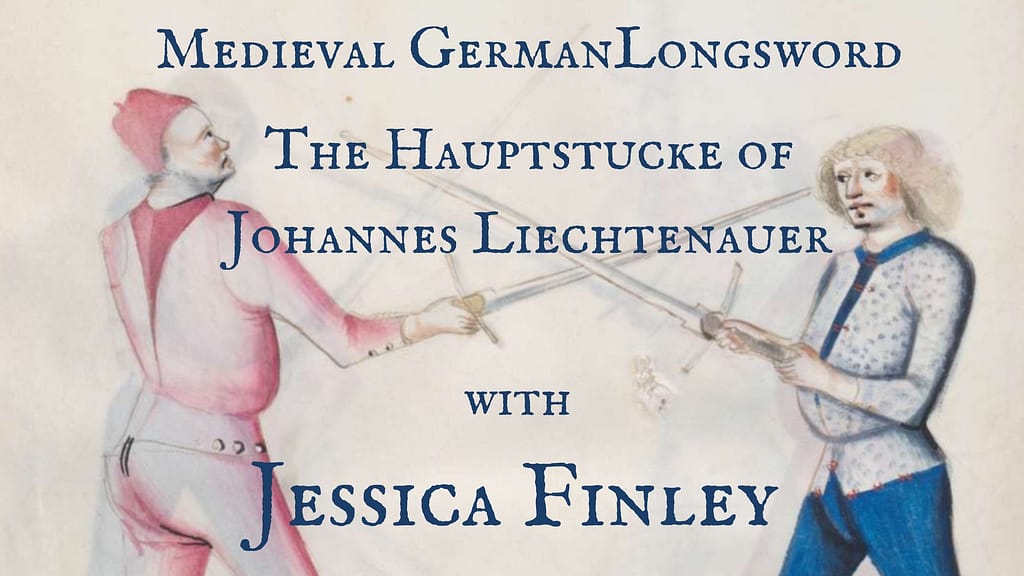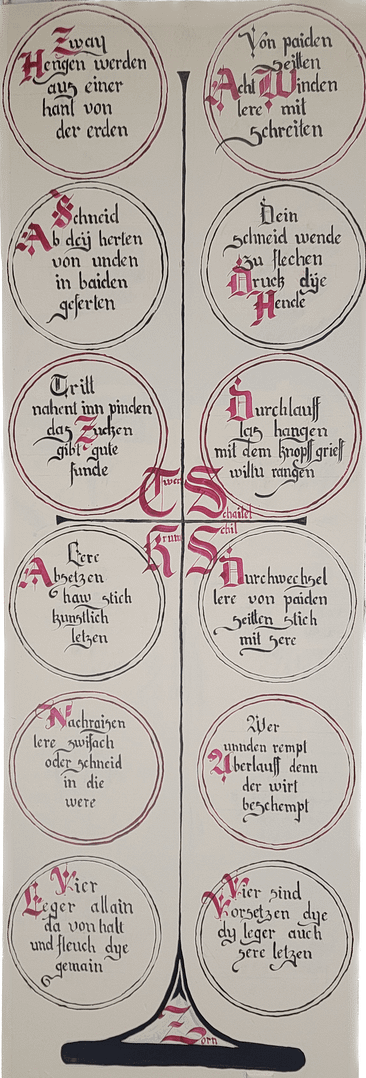In July I flew to Kansas to shoot video with Jessica Finley. I originally intended to just get the material for my medieval Italian wrestling course, but when I saw this amazing mural on Jessica's salle wall, I was hit by a really good idea- why not use this memory-tree of the 12 hauptstucke (“chief pieces of the art”) as a course plan?
Jessica is one of my oldest sword friends, and a highly respected colleague. We first met at a Western Martial Arts workshop event in about 2007. She was my first choice for a podcast guest (and has been back on the show twice since then). She started out as Christian Tobler’s student, and used the training he gave her to develop her own areas of expertise, notably in medieval German wrestling. She wrote the book Medieval Wrestling, published in 2014, which was one good reason why I shot my own medieval wrestling course with her. And she has her own way of organising and interpreting Liechtenauer’s longsword material, based on Liechtenauer’s own categorisation of the hauptstucke.
You can find the course here: https://swordschool.teachable.com/p/medieval-german-longsword-the-hauptstucke-of-johannes-liechtenauer?coupon_code=GERMANLONGSWORDYAY&product_id=5107732
It's currently 40% off, until Friday 10th November.
We have quite different teaching styles, as you can see in this video where she teaches the guard Ochs:
I think it’s important to expose your students to other instructors, and this is no less true in online courses as it is in person. When I ran my school in Helsinki, we averaged 3-4 visiting instructors per year.
But there is a very small overlap between the quite large group of instructors whom I would deem worthy to teach my students, and the much smaller group who have the skills to produce a course like Medieval German Longsword: the Hauptstucke of Johannes Liechtenauer. To be clear- Jessica herself doesn’t have the technical background to produce a course either (though she is solidly in the first group, and indeed taught a seminar for my students in Helsinki in 2015). But I do, and we had the time, the space, and the very clearly organised system that you need for producing a course, when I was over in Kansas in July this year.
My part in this course includes directing, producing, editing, and providing the Fiore perspective in each section, so the course itself is very much a collaboration. But every bit of Liechtenauer interpretation is 100% Jessica.
Here’s the next video in the sequence: Thrusting from Ochs and Pflug:
And yes! the launch window is closing, so if you’d like to get 40% off the course, you can do so with this link: https://swordschool.teachable.com/p/medieval-german-longsword-the-hauptstucke-of-johannes-liechtenauer?coupon_code=GERMANLONGSWORDYAY&product_id=5107732
The discount expires on November 10th. Tell your friends!
See you on the course!















